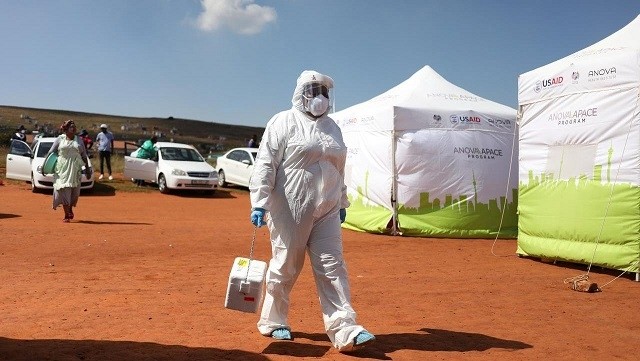According to the World Health Organisation (WHO), with its currently backward health system and limited financial resources, the "Black Continent" will be the next hot spot on the world’s COVID-19 crisis map. Meanwhile, in a worst-case scenario, the WHO estimates that the number of malaria deaths in sub-Saharan Africa may reach 769,000 this year.
To date, Africa has identified more than 30,300 COVID-19 infection cases and about 1,400 deaths. Compared to other epicentres like the US, Europe or China, Africa is still considered the least affected area by the COVID-19 epidemic. However, WHO stressed that the above figures do not fully outline the potential risk of the COVID-19 threat on the "Black Continent". It also warned of serious and unpredictable risks hidden in the COVID-19 outbreak in Africa.
According to UN statistics, with a population of 1.3 billion people, the continent currently needs 74 million COVID-19 test kits and 30,000 ventilators just for this year’s fight against the epidemic. However, 41 countries in Africa currently have only 2,000 ventilators and up to 10 have absolutely no ventilators at all. In addition, many health facilities are lacking in specialised hospital beds with equipment dedicated for COVID-19 patients, as well as masks, gloves and protective clothing for medical staff and doctors. The WHO said that the number of hospital beds in Africa is nearly five per one million people, a huge difference from nearly 4,000 beds per one million people in Europe.
Africa has for long had to import more than 90% of medicines and medical equipment. However, due to the disease plague, more than 70 countries around the world have restricted their export of medical supplies and equipment. In addition, countries have closed their borders or suspended air traffic. This situation has disrupted the global supply chain, making access to and import of medical equipment extremely difficult, and even "impossible" for many African countries. They can only rely on help from WHO or international relief organisations. In addition, in the disadvantaged and developing countries in Africa, there is a serious shortage of health workers. The ratio of doctors to population in Africa is among the lowest in the world, averaging one doctor per 1,000 people, while this figure in the European Union (EU) is about 37 doctors per 1,000 people.
For Africa, the situation is much more serious in areas where conflicts are taking place, or in locales where food shortages and malnourished children are "chronic illnesses", and in areas that need year-round international emergency relief to protect them from famine. Even in the absence of the COVID-19 pandemic, there is a constant struggle with many other common diseases, including malaria, in many other places.
The WHO warned that in a worst-case scenario, the number of malaria deaths in Africa this year is likely to double compared to last year and could reach 769,000 in the sub-Saharan region alone. The reason is that the health systems in disadvantaged countries in this region are struggling to cope with the COVID-19 epidemic, thus reducing their focus on other more established diseases like malaria. The WHO stated that if all the mosquito net distribution campaigns were delayed and the supply of effective anti-malaria drugs decreased by 75%, the number of deaths from malaria would rise to its highest level in 20 years, reversing the achievements in the global fight against malaria over the past 10 years.
In 2018, the world confirmed an additional 228 million cases of malaria in 89 countries and 405,000 deaths, showing no decrease since 2015. The Sub-Saharan region accounted for 93% of infected cases and 94% of deaths due to malaria. Given this situation, the two basic goals under the Global Technical Strategy for Malaria 2016-2030 as set by WHO, include reducing malaria morbidity and mortality by at least 40% by 2020, are certainly not realistic, while the goal of reducing the number of new cases and deaths by 90% by 2030 is at high risk of being missed.
The Africa Centres for Disease Control and Prevention (ACDC) warned that the COVID-19 epidemic could cause a double crisis in the continent, covering health, economics and security. According to the ACDC, the international community has not yet acted adequately as needed to assist African countries in coping with the disease threat. The WHO estimated that if there is no early attempt to contain the spread of COVID-19, the number of infected cases in Africa could skyrocket to 10 million within the next three to six months, with at least 300,000 dying from the illness. Moreover, tens of millions people would be pushed into extreme poverty, with lasting catastrophic consequences. This requires strong, swift action by local governments before it is too late. Africa once again needs the support of the international community so that the "Black Continent" is not left behind in the fight against the "invisible enemy" of the whole world.
















